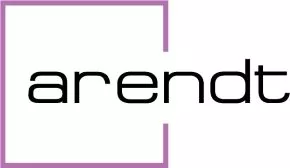On 10 November 2022, the European Insurance and Occupational Pensions Authority ("EIOPA") published two new staff papers aimed at providing more clarity on the proposal for an Insurance Recovery and Resolution Directive ("IRRD Proposal") that was published back in September 2021 as part of the Solvency II review package.
- A paper titled "Proposal for an Insurance Recovery and Resolution Directive: Frequently Asked Questions" ("FAQ Paper"); and
- A paper titled "A Comparison of Recovery and Resolution Frameworks in Banking and Insurance" ("Comparison Paper").
Both papers are part of a series of staff papers on the IRRD Proposal. They follow-up on the staff paper published back in July 2022 that provided an overview of the most relevant aspects of the IRRD_ Proposal.
Both papers specify that they deliberately focus on the original IRRD Proposal published by the European Commission and that EIOPA is aware that several aspects touched upon in the papers are subject to further discussions during the on-going negotiations.
1. FAQ Paper
The FAQ Paper answers the following 15 frequently asked questions relating to the IRRD Proposal:
- Why do we need an IRRD? Do (re)insurers fail?
- Does this mean that a solvency capital requirement (SCR) or minimum capital requirement (MCR) only needs to decline and, thus, not be below 100% for crisis management actions to be initiated?
- Why do we need a separate Resolution Authority?
- Is the draft Commission's proposal for an IRRD too similar to the Banking Recovery and Resolution Directive (BRRD)?
- How do the draft Commission's proposal for an IRRD and the BRRD interact?
- Which companies should be subject to recovery and resolution planning?
- Should a mutual company or a reinsurer be excluded from the planning requirements because of their specific legal structure or the nature of their business?
- Should a mutual company or a reinsurer be excluded from the planning requirements because of their specific legal structure or the nature of their business?
- Could certain products clash with the resolvability requirements, leading to the discontinuation of these products/business lines?
- How is it decided which failing undertakings go into resolution and which go into liquidation?
- Should the bail-in tool be part of the framework?
- How will resolution be funded?
- How would failing cross-border groups be resolved?
- What can be expected from EIOPA?
- Are policyholders protected from losses if their insurer fails?
2. Comparison Paper
The Comparison Paper includes a comparative analysis of the IRRD Proposal and the Bank Recovery and Resolution Directive ("BRRD") to identify similarities and differences between the two legal texts and to understand the rationale behind them.
Whilst the Comparison Paper confirms that the IRRD Proposal has indeed some common elements with the BRRD, which are warranted given that both texts are inspired by similar international standards and concern areas where there is no need for sectorial specificities, the paper also emphasizes that the IRRD Proposal maintains significant differences reflecting insurance-specific elements.
Key similarities include the following areas:
- overall scope;
- valuation;
- international cooperation;
- penalties;
- resolution objectives;
- resolution conditions;
- resolution powers.
Key differences include the following fields:
- preparation;
- resolution tools;
- recovery and resolution funding;
- institutional set-up.
The EIOPA concludes that the differences in the business model of insurers and the way they exert risks are properly considered in the IRRD Proposal but believes that further harmonization of the national Insurance Guarantee Schemes would be desirable and that the treatment of conglomerates should be clarified.
To read both the FAQ paper and the Comparison Paper, click
here_
To read the IRRD Proposal, click here_
To read the EIOPA staff paper which gives a general overview of the proposal for an IRRD, click here_
The content of this article is intended to provide a general guide to the subject matter. Specialist advice should be sought about your specific circumstances.



